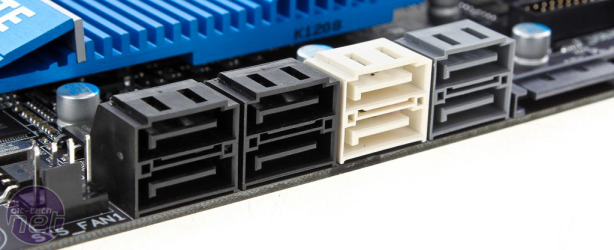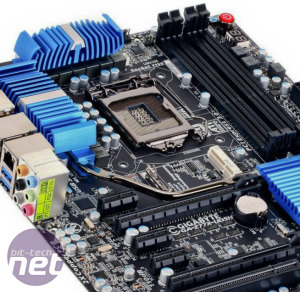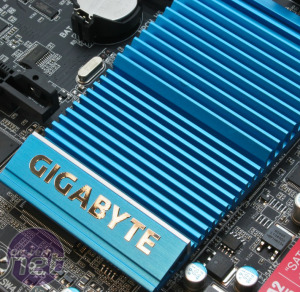Gigabyte GA-Z77X-UD5H Performance Analysis
Given its price tag of £160, the UD5H needed to perform well straight off the bat and thankfully it did. It’s image editing score of 1900 was only 19 points behind the (admittedly cheaper) Asus Maximus V Gene, but was a full 56 points faster than the vanilla Intel board.
The trend of good, if not spectacular performance continued in our stock speed video encoding test, but came to an abrupt halt in the multi-tasking portion of our Media Benchmarks. Here it was nearly 80 points (4.5 per cent) slower than the Asus board - a poor result for a board aimed at the same market as the Gene.
Unfortunately our 4.8GHz overclock couldn’t rescue the situation for the UD5H, as with it applied it fell even further behind the Asus board in everyday tasks. It even dropped behind the Intel board in tests that it had previously bested it in - a lead of 56 points was converted into a deficit of 36 points in the image editing test. This kind of performance meant that the UD5H came bottom of the pile in terms of overall score, a full 95 overall points behind the Gene when overclocked.
Fortunately for the UD5H, this is just half the story, as its gaming performance was much more positive. At stock speeds it matched the other two boards that we’ve tested, but when overclocked it bested them both, in both of the games that we tested with. In Arma II for example it pulled out a 3fps minimum framerate lead on the Asus board which, while not a huge amount, is comparable to the margins by which the red and black RoG board was beating it in our Media Benchmarks.
SATA performance too was good, with the UD5H matching the Gene in both read and write speeds. This is a heartening result, given that we were used to seeing Asus romp away as clear winners in this area during our 6-series board testing.
Conclusion
We’re happy to say that the UD5H is a pleasing return to form for Gigabyte, as it proved a very close match for both the Asus Maximus V Gene and the reference Intel board in our testing. Granted it was slightly behind the Gene in our Media Benchmarks, but it made up for this with a good showing in our games testing. It’s also as fully featured as you could expect a board to be, with the only notable omission being a CMOS reset switch on the back I/O.This, then, brings us onto the thorny issue of price, and here the Gigabyte UD5H has fluctuated pretty wildly over the course of the our testing and writing up. Back when we first got hands on the board we were looking at a price around £150 - level with the Gene. Fast forward on a few weeks though and the board has crept up to £160, or even £170 at Scan, where it’s only available on pre-order.
As things stand price wise then, it’s tough to recommend the UD5H over the Gene unless you specifically need the extra expansion slots. This isn’t to say it’s a poor board, merely that you’re essentially paying more for something that performs very very similarly to the Gene. Naturally this equation will change if the price comes back down, but until then the Gene remains our favourite Z77 board, if only by a whisker.

-
Value20 / 25
-
Features24 / 30
-
Speed42 / 45


MSI MPG Velox 100R Chassis Review
October 14 2021 | 15:04












Want to comment? Please log in.